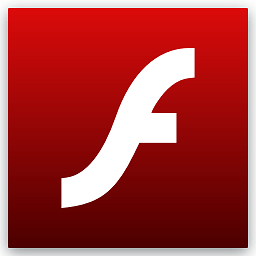Adobe Flash Player (labeled Shockwave Flash in Internet Explorer and Firefox) is computer software for using content created on the Adobe Flash platform, including viewing multimedia contents, executing rich Internet applications, and streaming audio and video. Flash Player can run from a web browser as a browser plug-in or on supported mobile devices. Flash Player was created by Macromedia and has been developed and distributed by Adobe Systems since Adobe acquired Macromedia in 2005. Flash Player is distributed as freeware.
Flash Player runs SWF files that can be created by Adobe Flash Professional, Adobe Flash Builder or by third party tools such as Flash Develop. Flash Player supports vector graphics, 3D graphics, embedded audio, video and raster graphics, and a scripting language called ActionScript. ActionScript is based on ECMAScript (similar to JavaScript) and supports object-oriented code. Flash Player is distributed free of charge and its plug-in versions are available for every major web browser and operating system. Google Chrome, Internet Explorer 11 in Windows 8 and later, and Microsoft Edge come bundled with a sandboxed Adobe Flash plug-in.
Flash Player once had a large user base, and was a common format for web games, animations, and graphical user interface (GUI) elements embedded in web pages. Adobe stated in 2013 that more than 400 million out of over 1 billion connected desktops update to the new version of Flash Player within six weeks of release.[11] However, Flash Player has become increasingly criticized for its performance, consumption of battery on mobile devices, the number of security vulnerabilities that had been discovered in the software, and its closed platform nature. Apple co-founder Steve Jobs was highly critical of Flash Player, having published an open letter detailing Apple’s reasoning for not supporting Flash on its iOS device family. Its usage has also waned because of modern web standards that allow some of Flash’s use cases to be fulfilled without third-party plugins.
In July 2017, Adobe announced that it would end support for Flash Player at the end of 2020, and continued to encourage the use of open HTML5 standards in place of Flash.The announcement was coordinated with Apple, Facebook, Google, Microsoft, and Mozilla. In September 2019, Microsoft announced that on December 31, 2020 Flash will be entirely removed from all browsers via Windows Update.





